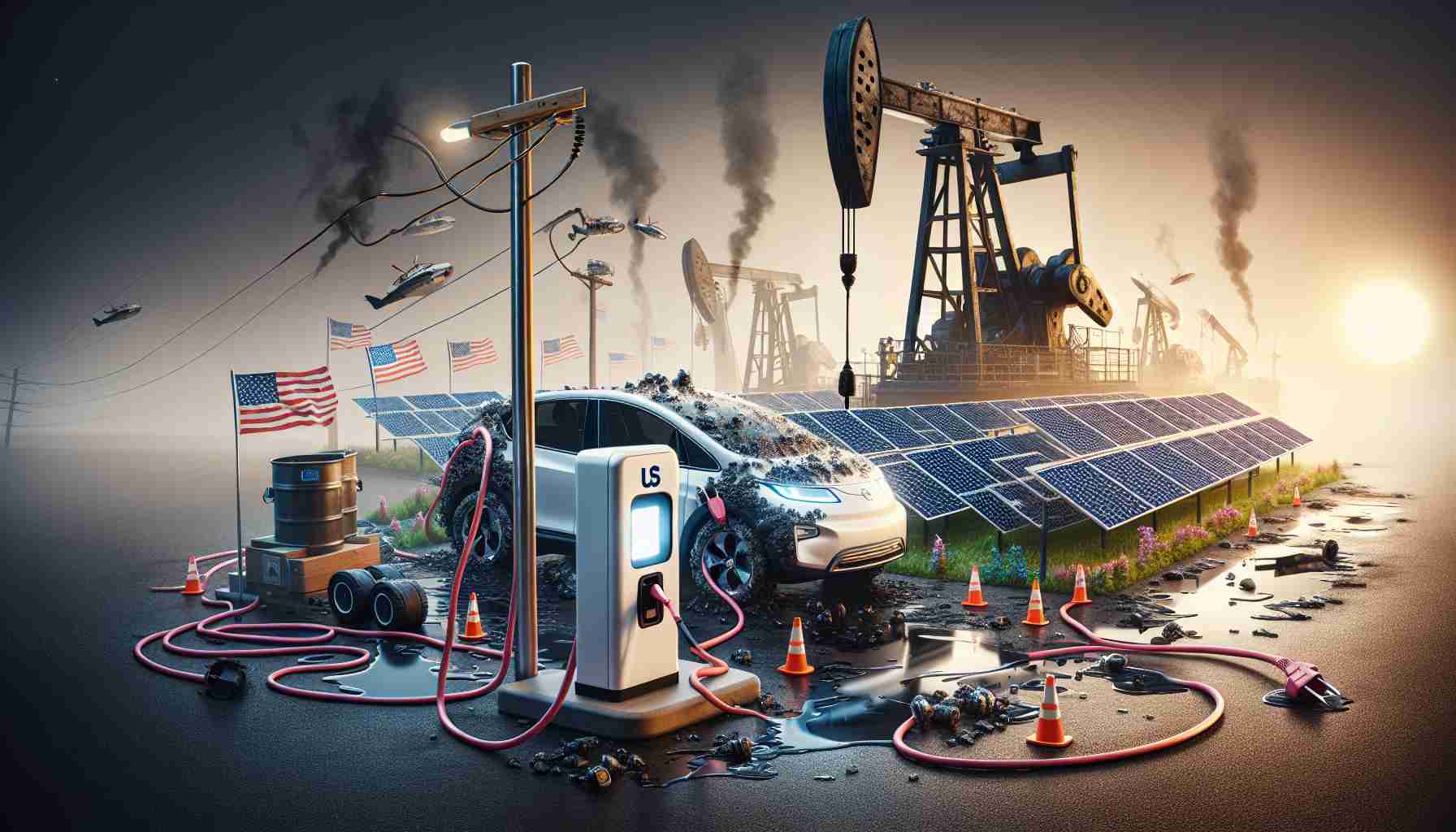- The new U.S. transportation policy aims to dismantle regulations for cleaner vehicles, prioritizing lower car prices.
- Vehicle price inflation is driven more by consumer preference for larger vehicles than regulatory burdens.
- Switching from gasoline to electric vehicles can save drivers approximately $1,200 annually due to lower fuel costs.
- Despite eliminating EV tax credits and funding for charging stations, electric vehicle sales are still projected to rise.
- U.S. automakers may be disadvantaged as investments in EV technology could be overshadowed by foreign competitors.
- The battle between sustainability policies and traditional energy interests suggests potential long-term economic and environmental challenges.
The recent pivot in U.S. transportation policy has left many reeling. Newly appointed Transportation Secretary Sean Duffy wasted no time in unveiling plans to dismantle Biden-era regulations aimed at cleaner, more efficient vehicles. With the backdrop of a Trump administration mantra promoting “reliable domestic energy supplies,” the changes are being framed as a way to lower car prices for consumers.
However, a closer look reveals a tangled web of implications. Experts suggest that the real reason behind skyrocketing vehicle prices stems from Americans’ predilection for larger, pricier SUVs and pickups, rather than an over-regulated market. The upfront costs of electric vehicles (EVs) might be steep, but a recent study revealed that drivers could save a whopping $1,200 annually by switching from gas to electric—thanks to lower fuel costs.
While the current administration plans to eliminate tax credits for EV purchases and federal funding for charging stations, industry analysts predict that sales of electric vehicles will rise anyway, accounting for 10% of new vehicle sales by 2025. This isn’t just about consumer choice; it’s a matter of national competitiveness.
Duffy’s policy shift risks sidelining American automakers who have invested billions into EV technology, opening the door wide for foreign competitors, particularly in China. As one climate advocate pointed out, the true victors here will be oil executives and international automakers, leaving the U.S. at a distinct disadvantage.
The takeaway? As the push for sustainability battles against traditional energy interests, consumer savings may come at the cost of long-term environmental and economic health. Buckle up—this ride is just beginning!
Shifting Gears: The Future of Transportation Under New Policies
In light of the recent transportation policy changes spearheaded by U.S. Transportation Secretary Sean Duffy, the investigation into the impact of these shifts reveals several critical insights and trends that were not originally included. Here’s a look at the new developments, useful comparisons, and key forecasts related to the evolving automotive landscape.
Innovations in Vehicle Technology
While the current administration is scrapping regulations aimed at promoting electric vehicle (EV) sales, automakers are not standing still. Recent innovations focus on the development of more affordable EV models and advanced battery technologies that could dramatically reduce costs. Brands are aiming for a broader market appeal, with estimates suggesting that by 2024, affordable electric models could drop below $25,000.
Use Cases Driving Electric Vehicle Adoption
1. Commuting Efficiency: With the rising cost of gasoline, urban commuters are increasingly turning to electric vehicles for day-to-day travel, benefiting from lower operational costs.
2. Corporate Fleets: More companies are adopting EVs for their fleets, driven by sustainability goals and potential long-term savings. This trend is predicted to accelerate as businesses seek to improve their corporate social responsibility profiles.
3. Ride-Sharing Services: Companies like Uber and Lyft are exploring options to electrify their fleets, aiming to reduce emissions and operating costs, which could lead to increased demand for EVs.
Limitations of Current Policy Changes
Despite the push towards deregulation, there are significant limitations:
– Infrastructure Readiness: The decrease in federal funding for charging stations could hinder the adoption of EVs, particularly in rural areas where charging infrastructure is sparse.
– Consumer Comfort: With the ongoing debates about the longevity and reliability of electric vehicles, consumer trust remains a barrier that companies must overcome.
Pricing Trends and Market Predictions
Industry forecasts indicate that, despite the policy shift, electric vehicles are expected to capture about 10% of new vehicle sales by 2025, projected to reach significant growth by 2030. Analysts predict that as battery technology improves, the price gap between electric and gasoline vehicles will continue to narrow, making EVs a more attractive choice.
Three Key Questions About the Future of U.S. Transportation
1. What are the economic implications of removing EV regulations?
The removal of environmental regulations risks stagnating innovation within domestic auto manufacturers and could hinder the U.S. market’s competitiveness against international automakers investing heavily in EV technology.
2. How will consumer behavior adapt to new federal policies?
Consumer focus is likely to shift towards EV offerings from companies that maintain incentives for buyers and demonstrate the long-term financial benefits of electric vehicles, despite federal tax credit eliminations.
3. Can the U.S. maintain its position in the global automotive market?
If domestic policies do not support sustainable technology advancements, the U.S. risks falling behind foreign competitors, especially in EV markets, where nations like China are advancing rapidly in both infrastructure and production.
Suggested Insights for Further Exploration
For a deeper dive into the current transportation policies and their implications, visit Transportation.gov for official updates and resources.
As we navigate through these transformative changes in transportation policy, it’s crucial to balance the immediate economic benefits with the long-term impact on sustainability and competitiveness in the automotive sector. Buckle up for a complex ride ahead!



















